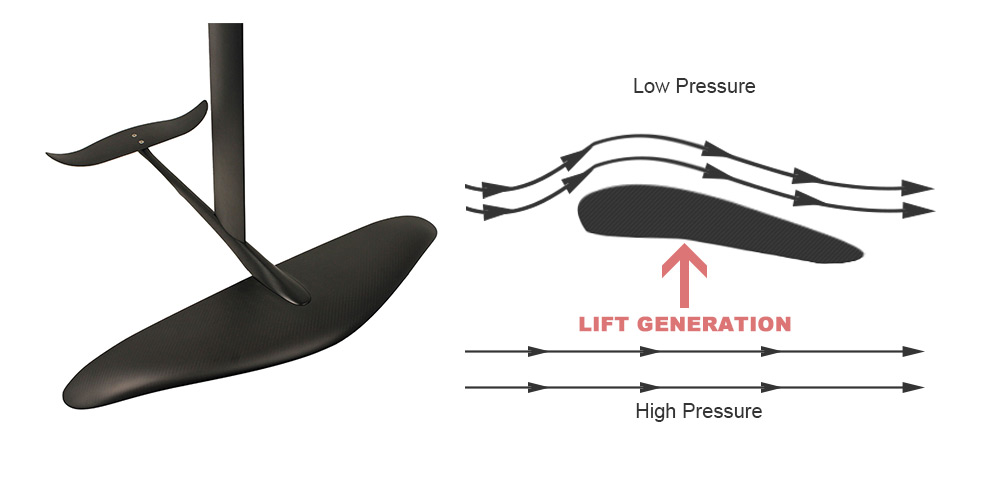How hydrofoils work? Many surfers are quite interested in it. Now, hydrofoiling has become a popular and exciting sport in various water-based activities. Hydrofoil technology involves lifting a watercraft’s hull out of the water, allowing the vessel to ride on hydrofoil wings beneath the water’s surface. This innovative approach offers enhanced performance, speed, and a unique experience in different water sports.
How Hydrofoils Work?
Hydrofoils work based on the principles of fluid dynamics and lift generation. They are designed to lift a watercraft‘s hull out of the water as it gains speed, reducing drag and allowing the vessel to move more efficiently and smoothly through the water. Here’s how hydrofoils work:

Lift Generation:
How hydrofoils work? Hydrofoils consist of wings or foils, which are typically shaped like airplane wings but are designed to operate underwater. When the water flows over the hydrofoil wings, it creates a pressure difference between the upper and lower surfaces of the wing. This pressure difference generates lift, similar to how an airplane wing generates lift in the air.
Angle of Attack:
The angle at which the hydrofoil is positioned relative to the water’s surface is known as the angle of attack. By adjusting the angle of attack, the hydrofoil can control the amount of lift being generated. Increasing the angle of attack generates more lift but can also lead to increased drag.
Speed and Velocity:
Hydrofoil technology becomes effective as the watercraft gains speed. As the watercraft moves forward, water flows over the hydrofoil wings. At a certain speed, the lift generated by the hydrofoils becomes greater than the weight of the watercraft, causing it to rise out of the water.
Reduced Drag:
Once the watercraft is lifted out of the water and is riding on the hydrofoils, the reduction in water drag results in increased speed and improved fuel efficiency, whether for boats, sailboats, or surfboards.
Stability and Control:
Hydrofoil systems often include additional components like stabilizers and control surfaces. Stabilizers help maintain balance and prevent excessive rolling or yawing motions, while control surfaces allow the pilot or rider to adjust the hydrofoil’s angle and orientation for better control.
Hydrodynamics:
The specific design of the hydrofoil wings, including their shape, size, curvature, and the overall hydrofoil system’s configuration, plays a crucial role in determining the performance and stability of the watercraft.
All in all, this article shows you how hydrofoils work . The hydrofoil technology has been used in various applications, including high-speed boats, passenger ferries, sailboats, personal watercraft, and even military vessels. It allows these watercraft(Like the hydrofoil board) to achieve higher speeds, increased efficiency, and improved ride comfort by minimizing the effects of wave resistance and water drag.
